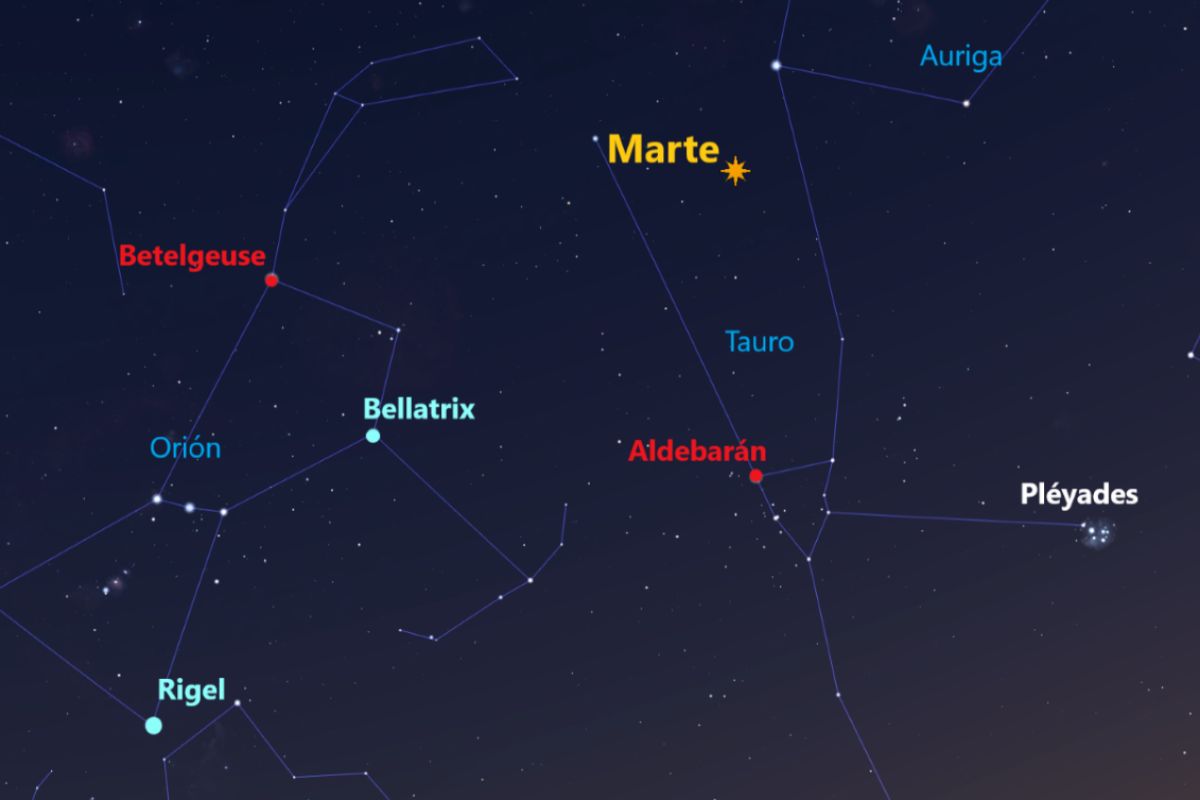Seasons, curiosities and celestial phenomena of spring
During this weekend the Moon will be approaching the duo formed by Jupiter and Saturn that is visible before dawn.
The three stars will form beautiful conjunctions at the beginning of next week.
Also, Mars is visible during the first part of the night.
Two morning stars
The days continue to lengthen rapidly in the northern hemisphere during the month of April (while they shorten in the south);
in Spain, the days already have about 13 hours of light.
Nature awakens and the nights are less cold than in previous months, everything invites you to go out and enjoy the landscape.
When they are well clear, these spring nights are great to enjoy the sky with the naked eye.
The sunrises of this beginning of April have two bright morning stars: the giant planets Jupiter and Saturn.
These days, the ringed planet rises around 5:30 am (UK time), closely followed by Jupiter rising half an hour later.
The separation between the two continues to grow slightly with each passing day.
An hour before the sun rises, we can see them from the southeast, well contrasted against the sky that begins to light up.
Early April, Mars in TaurusStellarium / RB
There is no possible mistake to identify the two planets, since Saturn shines much more discreetly than Jupiter.
And the first is almost twice as far away as the second: Saturn is now 10.3 times farther away than the Sun from the Earth, while Jupiter is at a distance that is 5.6 times that which separates us from the Earth. Sun.
Let us remember that the first full moon of spring (the one that sets the date of Holy Week), took place on March 28.
So April started with the Moon already waning.
During this Easter weekend and in the first days of next week, the last quarter will come to visit the same region of the sky that the giant planets occupy.
On Tuesday the 6th, the lunar disk will be below Saturn.
Wednesday 7 will be located below Jupiter.
The celestial trio will thus form beautiful conjunctions, which we will be able to observe at around 7:00 or 7:30 in the morning on the southeast horizon.
And an evening star
Besides Jupiter and Saturn, Mars is the third planet that is visible these days.
After passing near the Pleiades and the star Aldebaran in March, the red planet is now high in the constellation of Taurus, near Auriga.
After sunset we can see it high above the western horizon, to go down during the first part of the night until it hides, around 2 o'clock.
early morning.
The distance from Earth to Mars is now about 269 million kilometers, this is 1.8 times greater than the distance that separates us from the Sun.
So let's look up at the sky and enjoy the show.
Following the course of the planets, like following the cycle of the seasons on Earth, allows us to observe the passing of time in nature.
A glance at the sky, that great cosmic clock, reminds us of our location in this universe full of wonders.
Rafael Bachiller is director of the National Astronomical Observatory (National Geographic Institute) and academic of the Royal Academy of Doctors of Spain.
According to the criteria of The Trust Project
Know more
Science and Health
science
I + D + iPedro Duque presents the Pact for Science and Innovation in Congress
BiodiversityThe 'Vatican' of plants
ExoplanetsThe 'Rosetta Stone' to search for habitable planets
See links of interest
Work calendar
Home THE WORLD TODAY
Alba Berlin - Valencia Basket
Bautista - Sinner, live
Fenerbahce Istanbul - Barça
Real Madrid - Olympiacos, live
Levante - Huesca

